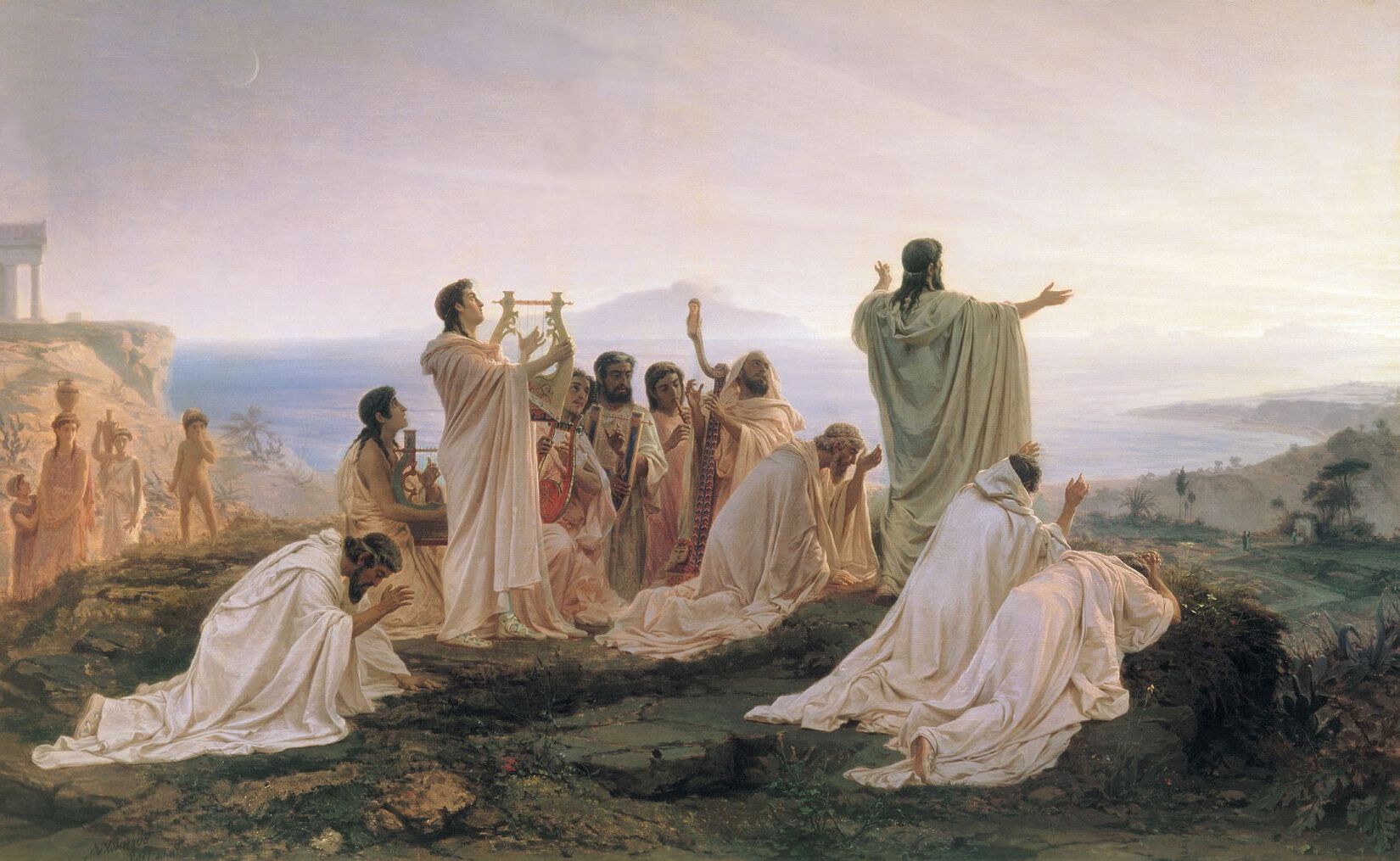
What is the Great Apostasy? The Great Apostasy is a belief that mainstream Christian Churches, especially the Catholic Church, strayed from the original teachings of Jesus Christ and his apostles. This concept is central to groups like the Church of Jesus Christ of Latter-day Saints (LDS Church) and Jehovah's Witnesses. They argue that after the death of the last apostle, the true faith was lost and needed restoration. Critics claim the Catholic Church incorporated pagan practices, leading to this spiritual decline. Scriptural references and historical events are often cited to support this idea, making it a hot topic in Christian eschatology.
Understanding the Great Apostasy
The Great Apostasy is a significant concept in Christian eschatology, especially within the Restorationist tradition. It suggests that mainstream Christian Churches have deviated from the original faith established by Jesus Christ and his apostles. Let's explore some key facts about this intriguing topic.
-
Definition and Concept
The Great Apostasy refers to the perceived falling away of mainstream Christian Churches from the original faith. This concept is deeply rooted in Christian eschatology and is a cornerstone of the Restorationist tradition. -
Historical Context
The idea of a Great Apostasy has its roots in early Christian history. The Second Epistle to the Thessalonians (2:1-12) contains a passage where the Apostle Paul warns of a great apostasy that must occur before the return of Christ.
Restorationist Tradition and Criticisms
Various groups believe that traditional Christianity has strayed from its original teachings. This belief has led to the formation of new religious movements aiming to restore the true faith.
-
Restorationist Tradition
Groups like the Church of Jesus Christ of Latter-day Saints (LDS Church), Jehovah's Witnesses, and Iglesia ni Cristo adhere to the Restorationist tradition. These groups believe that traditional Christianity has fallen into error and that the true faith needs to be restored. -
Catholic Church Criticism
The Catholic Church has been a primary target of criticism regarding the Great Apostasy. Critics argue that the Catholic Church incorporated pagan beliefs and practices into Christianity, leading to a fall from the original faith.
Protestant and Orthodox Views
Different Christian denominations have their own interpretations of the Great Apostasy, often focusing on the perceived deviations of other groups.
-
Protestant Views
Protestant denominations also subscribe to the idea of a Great Apostasy. They often view the Catholic Church as having deviated from the original teachings of Christ and the apostles. -
Orthodox Views
The Eastern and Oriental Orthodox Churches have their own interpretations of the Great Apostasy. They often see it as a future event related to the reign of the Antichrist rather than a historical occurrence.
Scriptural and Apostolic Evidence
Scripture and early Christian writings provide several references that support the concept of a Great Apostasy.
-
Scriptural Evidence
Scripture provides several references that support the concept of a Great Apostasy. For example, Isaiah 29:10-13 warns of spiritual darkness, and Amos 8:11 speaks of a famine of hearing the words of the Lord. -
Apostolic Predictions
The apostles and prophets predicted the fall of the Church. Jesus himself warned about false Christs and false prophets (Matthew 24:24), and Paul spoke of grievous wolves entering the flock (Acts 20:29).
Historical Evidence and Key Figures
Historical events and influential figures have also played a role in shaping the narrative of the Great Apostasy.
-
Historical Evidence
Historical evidence supports the idea of a gradual decline in the Church's adherence to its original principles. The rise of Islam diminished the power of the Bishop of Constantinople, allowing the Bishop of Rome to claim greater authority. -
James E. Talmage's Work
James E. Talmage, a prominent LDS theologian, wrote extensively on the Great Apostasy. His book, "The Great Apostasy," provides a detailed account of the decline of the primitive Church and its restoration.
LDS Church's Position and Scriptural Predictions
The LDS Church has a unique perspective on the Great Apostasy, viewing it as a historical event that necessitated the restoration of the true Church.
-
LDS Church's Position
The LDS Church believes that the Great Apostasy began shortly after the death of the last apostle. They argue that the primitive Church lost its divine authority and degenerated into an earthly organization. -
Scriptural Predictions
Scriptural predictions of the Great Apostasy include Isaiah's vision of spiritual darkness (Isaiah 60:2) and Paul's warning about the Galatians' quick departure from the faith (Galatians 1:6-7).
Medieval Christianity and Reverence
Despite the perceived apostasy, medieval Christians played a crucial role in preserving and transmitting the faith.
-
Medieval Christianity
Medieval Christians are often viewed as having kept the light of Christ alive despite the perceived apostasy. They preserved and transmitted scripture, developed rich traditions of worship, and maintained diverse modes of religious life. -
Reverence for Medieval Christians
Instead of perceiving medieval Christians as deluded by apostasy, they should be revered for their devotion to Jesus Christ. This perspective encourages a more positive view of historical Christianity.
Common Themes and Historical Timeline
The idea of apostasy and restoration has been a recurring theme among various religious movements, and a historical timeline can be traced through key events and prophecies.
-
Common Themes Among Restorationist Movements
The idea of apostasy and restoration was common among many upstart restorationist movements of the 19th century, including Methodists, Baptists, Disciples of Christ, and others. -
Historical Timeline
A historical timeline of the Great Apostasy can be traced through various events and prophecies. The decline of the primitive Church was predicted by prophets and apostles, and its restoration was seen as a necessary step before the Second Coming.
Responses from Different Denominations
Different Christian denominations have their own responses to the concept of the Great Apostasy, often defending their traditions and practices.
-
Catholic Response
Catholics argue that the concept of a Great Apostasy is often used to discredit their church. They claim that the early Church faced challenges but remained faithful to its core teachings, and that the idea of a complete apostasy is an oversimplification. -
Protestant Response
Protestants generally agree with the idea of a Great Apostasy but place the blame on the Catholic Church for its perceived corruption and incorporation of pagan practices. They see the Reformation as a necessary correction to restore the original faith.
Latter-day Saint Perspective and Unity
The Latter-day Saints have a unique perspective on the Great Apostasy, viewing it as a historical event that led to the restoration of the true Church. This perspective can also foster greater unity among different Christian traditions.
-
Latter-day Saint Perspective
Latter-day Saints view the Great Apostasy as a historical event that occurred after the death of the last apostle. They believe that God did not withdraw from the world but continued to guide faithful believers throughout history, leading to the restoration of the Church in modern times. -
Reconciliation and Unity
The traditional narrative of the Great Apostasy has often sowed division among Christian denominations. However, a reevaluation of historical Christianity can foster greater understanding and unity among believers, recognizing that all Christian traditions are part of a larger family tree.
Understanding the Great Apostasy
The Great Apostasy is a complex idea that has shaped many Christian beliefs. It suggests mainstream Christian Churches, especially the Catholic Church, strayed from the original teachings of Jesus and his apostles. This belief is central to groups like the LDS Church, Jehovah's Witnesses, and Iglesia ni Cristo. They argue that the true faith needs restoration due to this apostasy. Critics often target the Catholic Church, claiming it adopted pagan practices. However, the Orthodox Churches see the Great Apostasy as a future event tied to the Antichrist. Historical and scriptural evidence supports both sides of the debate. While the idea has caused division, a reevaluation of historical Christianity can promote unity among believers. Recognizing all Christian traditions as part of a larger family tree can foster greater understanding and respect.
Was this page helpful?
Our commitment to delivering trustworthy and engaging content is at the heart of what we do. Each fact on our site is contributed by real users like you, bringing a wealth of diverse insights and information. To ensure the highest standards of accuracy and reliability, our dedicated editors meticulously review each submission. This process guarantees that the facts we share are not only fascinating but also credible. Trust in our commitment to quality and authenticity as you explore and learn with us.


